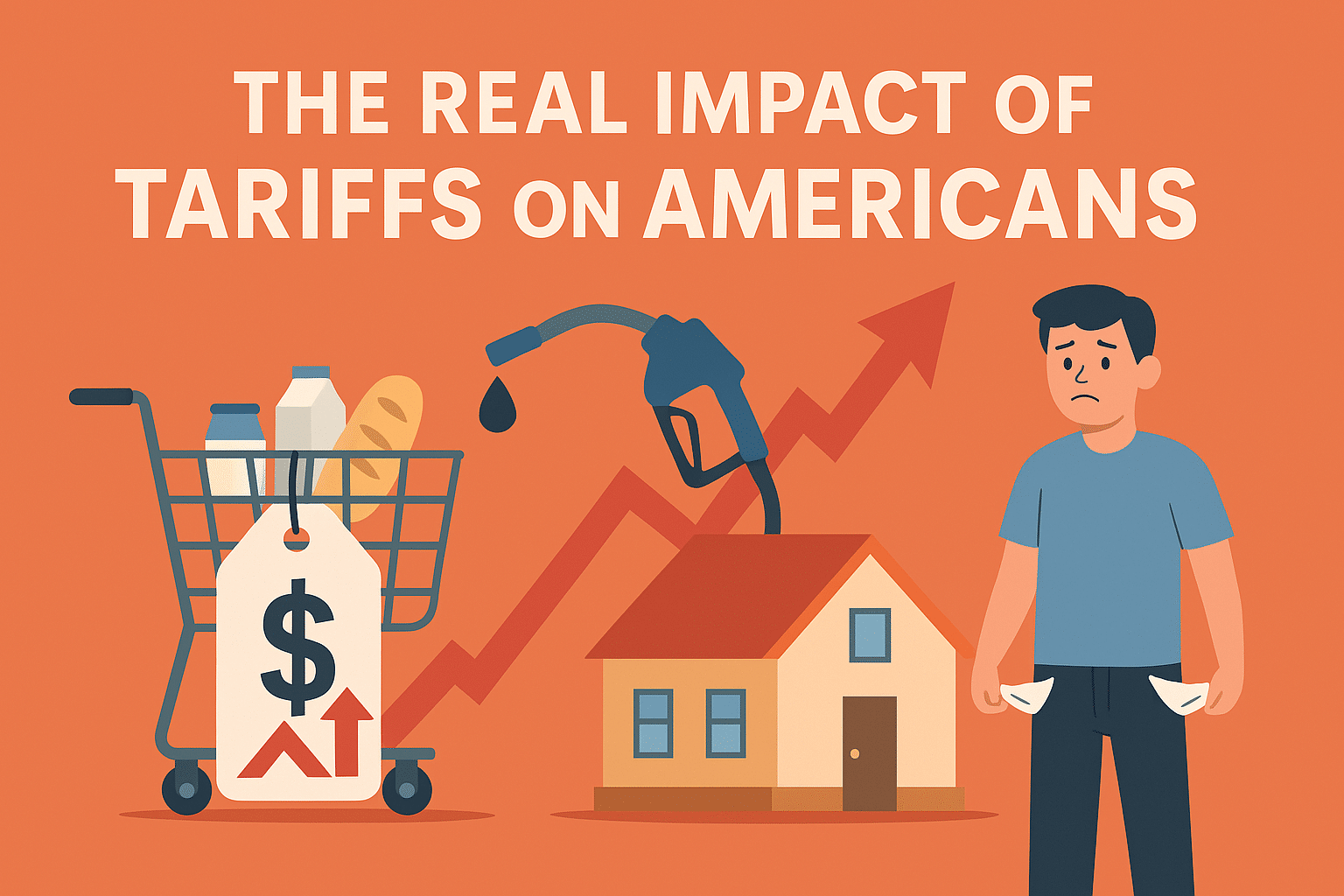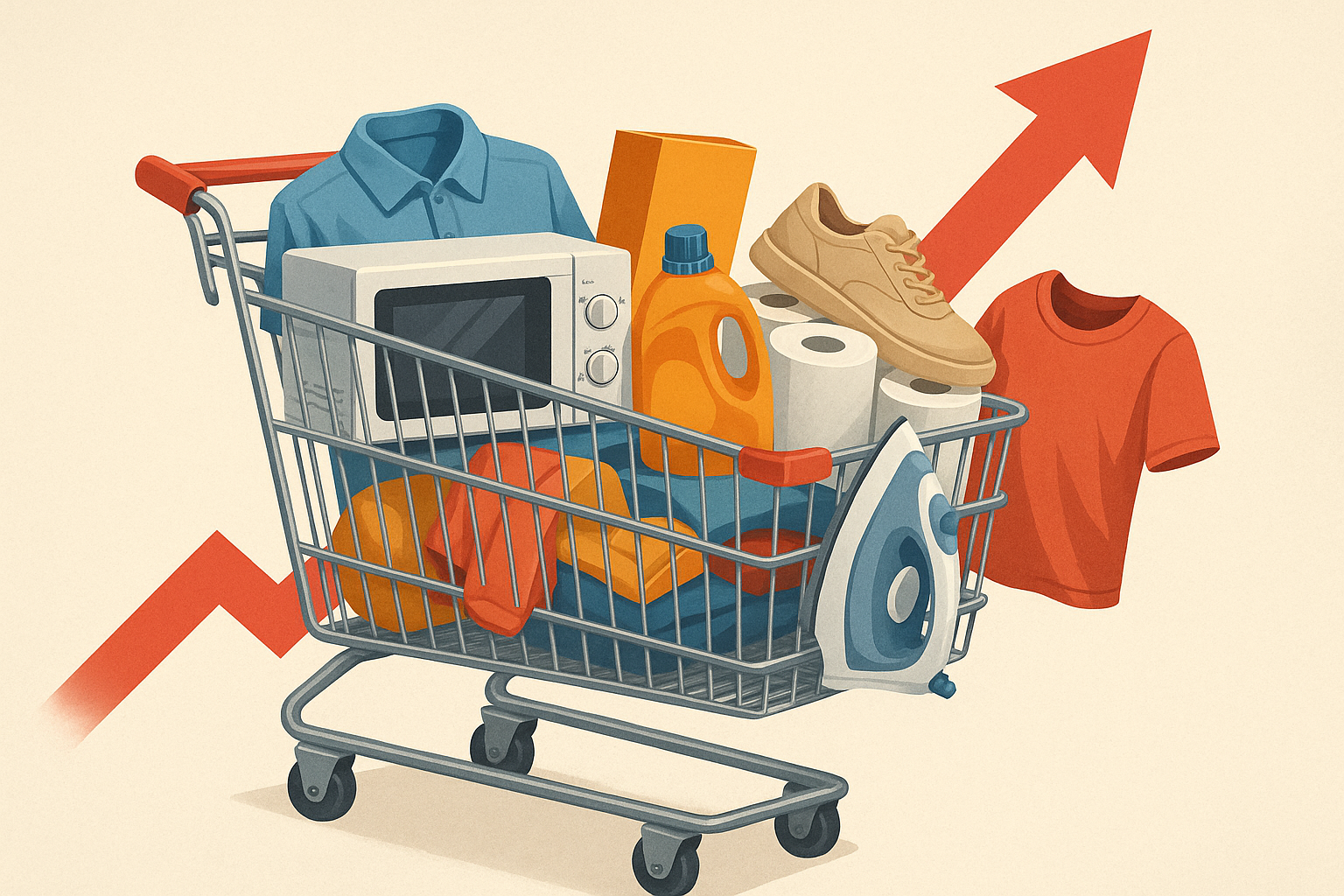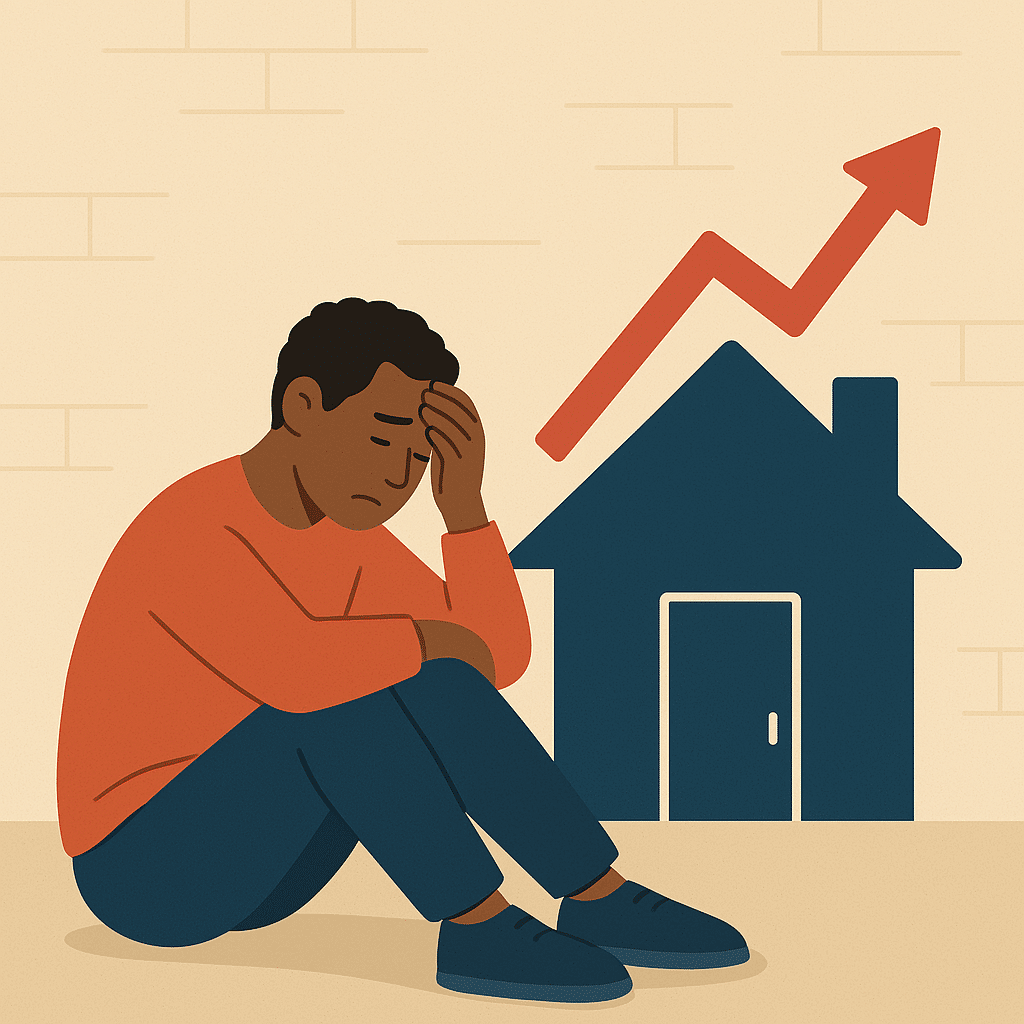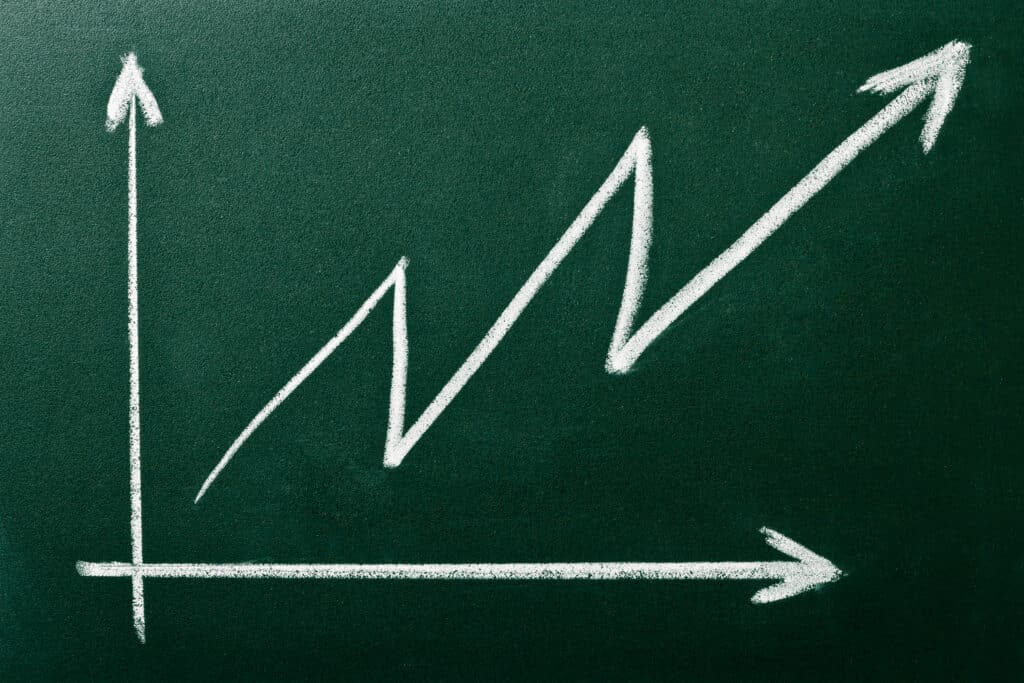The Real Impact of Tariffs on Americans
The Real Impact of Tariffs on Americans: Who Really Pays the Price


By Billy Ribeiro | Globally Recognized Trader & Market Strategist
Billy Ribeiro is a globally recognized trader renowned for his mastery of price action analysis and innovative trading strategies. He was personally mentored by Mark McGoldrick, famously known as “Goldfinger,” Goldman Sachs’s most successful investor in history. McGoldrick described Billy Ribeiro as “The Future of Trading,” a testament to his extraordinary talent. Billy Ribeiro solidified his reputation by accurately calling the Covid crash bottom, the 2022 market top, and the reversal that followed, all with remarkable precision. His groundbreaking system, “The Move Prior to The Move,” enables him to anticipate market trends with unmatched accuracy, establishing him as a true pioneer in the trading world.
Connect with Billy: LinkedIn | X (Twitter) | YouTube
The Impact of Tariffs on Americans: Enriching the Country, Not Its People
Tariffs are often pitched as patriotic. Politicians claim they protect American jobs, bring manufacturing home, and strengthen the economy. On paper, that may sound like a win for the country.
But in practice, the impact of tariffs on Americans looks very different. While they may boost government revenue and benefit a few select industries, they inevitably drive up the cost of nearly everything. It’s the middle- and working-class who bear the brunt of those increases.
What Are Tariffs and How Do They Work?
A tariff is simply a tax placed on imported goods. When foreign products are taxed at the border, importers are forced to pay more to bring those items into the country. They don’t absorb that cost. Instead, they pass it along to businesses, retailers, and eventually, to you, the consumer.
Whether it’s your weekly groceries, your kid’s school supplies, or basic household items, tariffs have a direct and quiet effect on your wallet.
The Everyday Impact of Tariffs on Americans: Higher Prices

Table of Contents
ToggleImagine walking into Walmart to grab a $10 fan or a backpack for your child. Thanks to tariffs, that same item might now cost $20 or even $30. This isn’t an exaggeration; it’s the reality for many imported goods, including:
- Kitchen appliances and furniture
- Clothing and shoes
- Electronics and tools
- Toys and seasonal items
These aren’t luxury products. They’re everyday essentials. For families already stretched thin by inflation, these increases can be devastating.
Homeownership Becomes an Even Bigger Challenge

If you’re hoping to buy a home, tariffs make it harder. Many building materials are imported, and tariffs raise the price of lumber, steel, appliances, and flooring. As construction costs rise, so do new home prices, pushing many first-time buyers out of the market.
Billy’s Take:
“As traders, we look at economic data, but we can’t forget the real-world impact. A tariff might look good on a national balance sheet, but it acts as a regressive tax on households. It’s a direct hit to disposable income, which reduces consumer spending and can ultimately slow down the very economy it’s supposed to protect. The stock market might cheer the headline, but families feel the pain at the checkout line.”
A Real-World Look: The Data Behind the Budget
This isn’t just hypothetical. Research from institutions like the Peterson Institute for International Economics has consistently shown that the cost of tariffs is passed almost entirely to U.S. consumers. This case study illustrates the direct impact of tariffs on Americans’ household budgets through the “Johnson family,” a hypothetical family of four:
- Their grocery bill, which includes imported fruits and packaged goods, is up by $75 per month.
- Back-to-school shopping for their two children cost $300 more than last year due to tariffs on clothing and electronics.
- Their rent increased by $100 per month as the landlord passed on the higher costs of maintenance and appliance repairs.
In total, that’s an extra **$2,500 per year** in costs, with no increase in their income. They didn’t choose these policies, but they’re paying the price every month.
Who Actually Benefits From Tariffs?
It’s important to be clear: tariffs do benefit some groups, just not most Americans. The primary winners are:
- The U.S. Government: Collects more tax revenue.
- Certain Domestic Industries: A few protected sectors, like steel or auto manufacturing, face less foreign competition.
However, these gains are paid for by consumers, small businesses, and working families who see their purchasing power shrink with no direct benefit in return.
Conclusion: The True Impact of Tariffs on Americans
Tariffs may help balance trade or generate revenue, but that benefit doesn’t reach most households. The impact of tariffs on Americans isn’t just a headline; it’s seen in grocery store receipts, rent increases, and rising credit card balances.
For economic policies to be truly successful, they must consider the people living with their consequences. Tariffs are not just about economics—they are about financial survival for many working families.
Continue Your Learning
Explore these related topics to build a complete trading education:
Elevate Your Trading Skills
Ready to understand how economic policies affect market trends? Join our community for in-depth analysis and expert strategy. Sign up today to start trading with a real edge!
Small Account Mentorship
1-on-1 coaching to build the discipline and strategy to grow a small account.
Explosive Swing Alerts
Actionable, alerts-only service for our flagship explosive swing trade setups.
Frequently Asked Questions (FAQ)
Q: What are tariffs, in simple terms?
A: Tariffs are taxes placed on imported goods. They raise the cost of those goods for American businesses and, ultimately, consumers.
Q: Do tariffs affect prices directly?
A: Yes. Businesses almost always pass their increased costs on to consumers, which means you pay more at the register for the same products.
Q: Are tariffs always bad?
A: Not necessarily for everyone. They can protect specific domestic industries from foreign competition. However, if they are too broad or poorly targeted, they tend to hurt far more American consumers than they help.
Q: How can I protect my finances from rising costs due to tariffs?
A: While you can’t control policy, you can focus on smart financial habits: budget carefully, prioritize buying locally-produced goods when possible, and build an emergency fund to absorb unexpected price shocks.
Get Actionable Insights Direct to Your Inbox
Want more market analysis and trading strategies like this one? Join our free weekly newsletter for professional-grade content delivered straight to your inbox.
CRITICAL: Trading involves substantial risk of loss and is not suitable for all investors. The content of this article is for educational purposes only and is not a recommendation to buy or sell any security. All trading strategies are used at your own risk.






